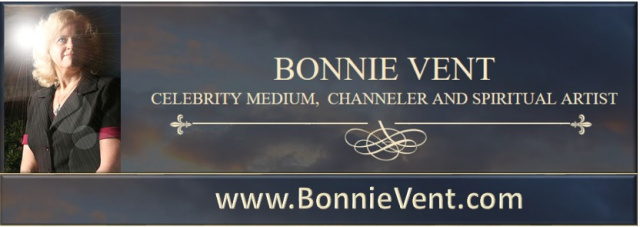WILLIAMSBURG - Colonial Williamsburg's Teacher Institute has been called "Teacher Disneyland" for the social studies set. But is it so powerful an experience that bringing history alive can also bring back the dead?
For teachers from Arizona, Texas and Florida attending the institute recently, some got more of a behind-the-scenes look at history than others.
A mother-daughter pair of Florida teachers stayed at the Richard Crump House in the Historic Area. On the second night of their weeklong visit, the daughter saw a ghostly female figure in their room about 4 a.m.
"I don't know why I woke up," said Michelle Law, the daughter. "I saw her across the room. I just kept looking, wondering if I was awake. I didn't move."
The figure wore Colonial clothes. Her face didn't have details. After a few minutes, Law reached over to wake her mother, Laurie Wolvin, and the movement made a sound. The ghost turned as if it heard the sound and started for Law's bed. Law screamed.
Wolvin turned on the lights but didn't see anything — the ghost had disappeared in the bright light. The room lights stayed on the rest of the morning.
And all the next night. Law and Wolvin didn't get much sleep. They debated all day before their fourth night whether they'd stay in the Crump House, an original building on Francis Street. Late in the day, they decided to ask for new rooms.
"When we went to the housing desk, they said someone else had seen a ghost there this summer and asked to move out," Wolvin said. She seemed relieved.
Arizona teacher Don Curry also stayed in the Crump House — but downstairs. The night after Law's sighting, he left his bathroom light on. He woke up at 4 a.m. to find the light off.
"I'm 100 percent positive I left it on. But I'm not sure if I woke up and turned if off again. I've sort of convinced myself that's what happened," Curry said. "I keep thinking it's the ambiance, but I feel like I'm not alone. I've felt it every night since I got here."
A ghost sighting is the ultimate example of the immersion that the institute promises to about 430 teachers each summer. Teachers sleep in Colonial houses, eat in the taverns, mix with costumed interpreters and take classes with historians on topics from 18th-century court proceedings to gender roles. Since 1990, more than 5,000 teachers have refreshed themselves at the institute.
The 26 other teachers in the recent session with Curry, Law and Wolvin danced slave dances in the backyard of the Powell House, looked for bugs on tobacco plants at Great Hopes farm, and analyzed pieces of pottery on a mat that imitated an archaeological dig. They even met George Washington.
"I love that it doesn't feel touristy to me. It genuinely feels like a museum experience," Washington teacher Amanda Pemberton said.
Some of the strange happenings that week were intentional: Teachers got into the spirit by hiding behind boxwood rows to jump out and scare their friends. But the spookiness reported at the Crump House connected to serious matters through programs such as "Cry Witch!" and the continual push for teachers to ask students to look for firsthand evidence.
"What I got from that program is that you cannot put chains around free thinking," Texas teacher Gwen Ransom said. "You tell your students: 'You've been given a brain. Use it!'"
Museums across Virginia preach the same message in their imitation of Colonial Williamsburg's institute. While Curry, Law and Wolvin were at CW, other teachers were at the Frontier Culture Museum in Staunton, learning about African-American storytelling, music and food in a four-day $75 class that counted for graduate credit.
And that week, the Jamestown-Yorktown Foundation held a teacher institute for the first time since 2000. Its 24 teachers worked on the site and in costume with historical interpreters at Jamestown Settlement and the Yorktown Victory Center.
They developed lesson plans, and at the end of the week, the took home kits of reproduction artifacts to use in classrooms. A $100,000 grant from the Jamestown 2007 Stamp & Cachet Project Committee and $50,000 from the Ukrop Foundation of Richmond paid for the institute.
As for the CW institute: In 2007, only 5 percent of the teachers attending paid their own way. Federal Teaching American History grants paid for 28 percent of the attendees, and Colonial Williamsburg donors paid for 66 percent of the teachers to attend.
But all in all, it's good marketing for the museums. They know that their graduates will become advocates for their brand. It's like the flash of a backstage pass: In a class about Colonial Williamsburg's digital resouces, a CW staffer showed off one of the three Emmys that the foundation won last year for its Electronic Fieldtrip series for schools. The institute teachers wanted to touch it or have their photos taken as they vogued with it.
But there was much more. That class showed the teachers how to use a disc of material that would fill two 3-inch binders if printed out. Teachers "oooo"-ed and "aaah"-ed when shown that the disc had dance steps for "The Surrender of Calais," which they learned at the Capitol a few nights before. When a different disc file played the music of the dance, the approvals grew louder. When a third file played a video of costumed interpreters doing the dance, one teacher gasped, "Oh, my God!" It was teacher trick-or-treat.
"I can't wait to go back and NOT use my textbook!" young Texas teacher Erin Devetski said. Her classmates applauded.
But the harsh reality of the classroom clock still exists. These master teachers are the kind who come to Williamsburg knowing about "The Parson's Cause" (an obscure Colonial legal case that set Patrick Henry on his road to fame). They loved learning details about British pounds and pence. But how will they cram these details into their everyday schedule?
"They're not going to teach everything they learn here, but it will change their own insights and allow them to address misconceptions," Wisconsin educator Susan Hamblin said. "They will feel more comfortable teaching history. Especially for a lot of these elementary schoolteachers, they're hestitant to teach this."
Devetski from Texas felt her own confidence growing as her week continued. When the teachers dressed in the official clothing of wealthy landowners, slaves, soldiers and tradesmen, Devetski groaned, "Great. We only need $5,000 to do this in our school." Institute staffers pounced and got the teachers to brainstorm how to improvise costumes with a father's athletic socks for stockings and rolled-up sweatpants for breeches.
Devetski is about to start her third year of teaching and is tired of the tight time that she has to manage in her classroom under the cloud of standardized testing. After an afternoon sharing lesson ideas with the other teachers, she said, "I'm going to take a new approach this year. I'm closing my door and doing what I want to do!"
That spirit of independence even cut into the official instruction of the institute. As a staffer at the DeWitt Wallace Decorative Arts Museum pointed out highlights of a giant portrait of England's King George III, teachers sneaked photos of a quilted and embroidered English bedspread hung on the opposite wall.
After lunch at the museum, another staffer tried to gather the teachers up the stairs and toward the bus for the next event.
The teachers rebelled against the schedule when they spied two women in costume starting to work a loom nearby.
The teachers flocked around the loom, some taking turns on it, while others snapped photos — and stretched their textile time until the last possible moment.



